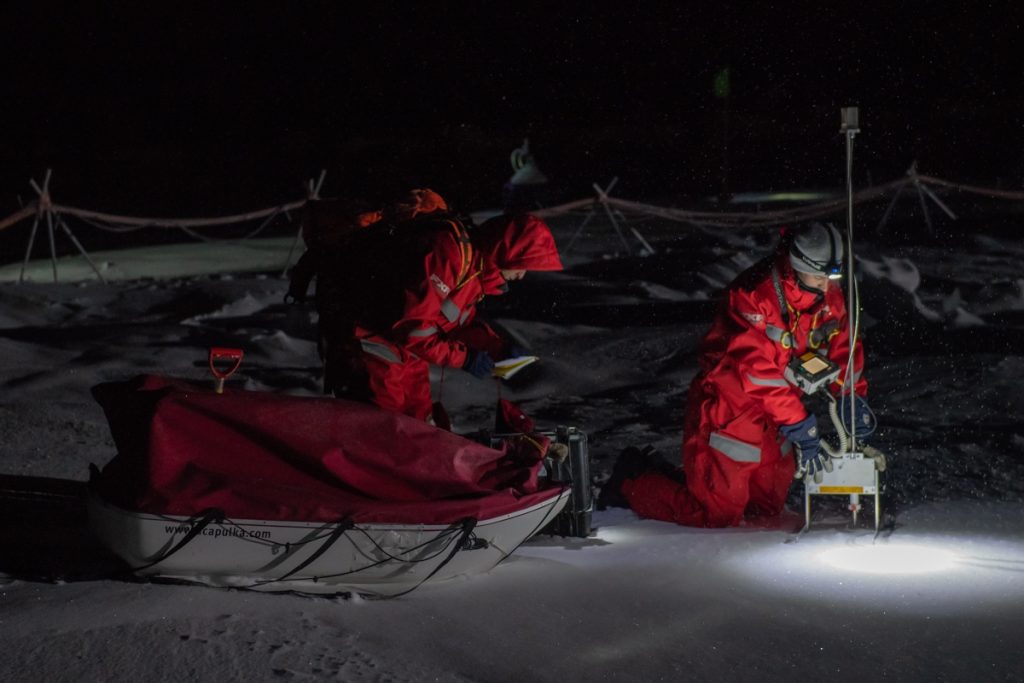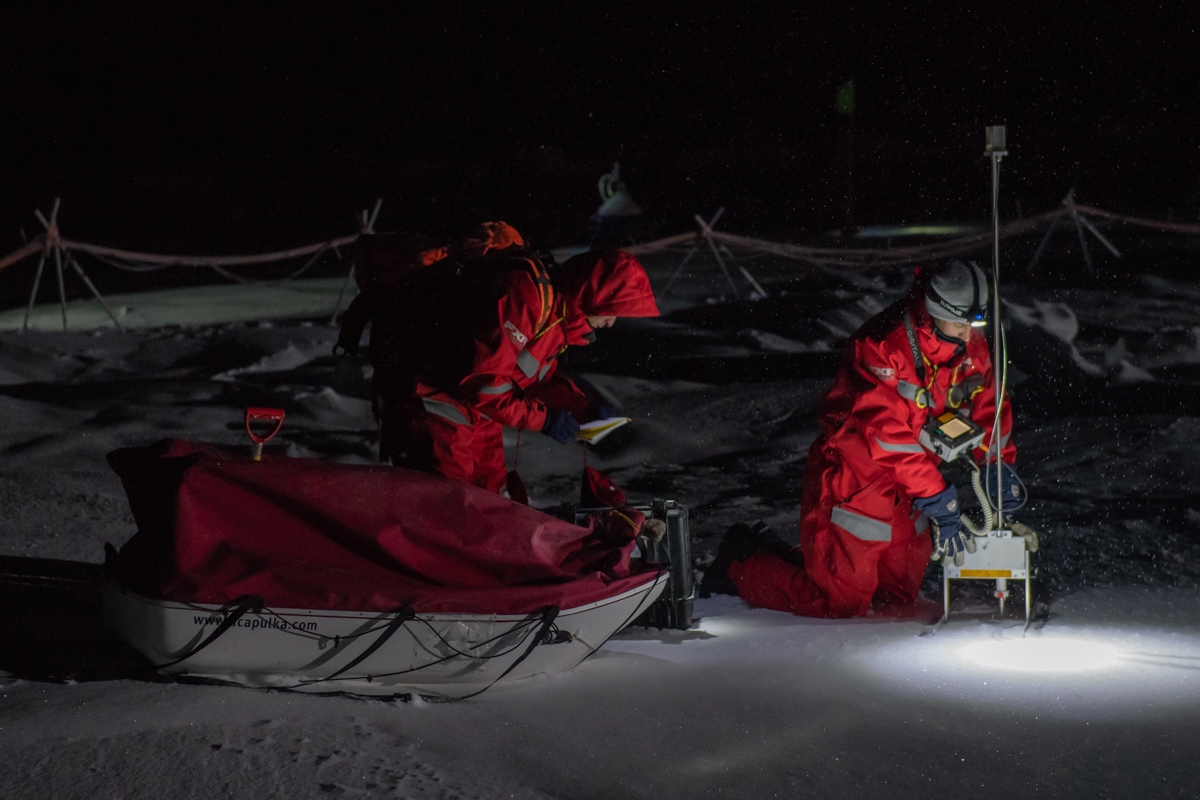With all the ice movements and openings, travel across the ice becomes a big challenge. We have to hop from floe to floe to get to Met City, sometimes over ridges and sometimes across cracks. Today was especially challenging because there was fresh snow that had blown across everything, covering cracks and thin ice. Blowing snow in the air limited visibility, and gave a bite to the cheeks. On our way out there were new cracks right under the road, most passable on a snow machine if you keep moving. Eventually the snow machine was no longer possible so we continued on foot, coming eventually to crossing that had been active before. It was hard to tell its conditions today, with all of the new snow. Some probing showed areas of strength and areas that were soft. I probed on two sides of an area, finding strength, then took a step…. But my foot keep sinking down into the slushy ice-snow mixture. I quickly flattened out, my upper body and one foot on solid ice but my knee pushing down into the slush. Two travel partners were there to help, and I made it back safely onto fully solid ice. I ended up with a wet knee and fore-leg, but no water inside my suite or boot. A bit of a thrill but safe in the end, and we made it through to do our work. On that same trip we had another wet boot, and there have been many similar occurrences, the most extreme being someone in up to their waist but quickly extracted. These things are to be expected around here as we work in this environment. We have great gear to deal with the conditions: good boots, body suits that float and keep most water out. We carry throw bags and ice picks to help get out of the water if it gets to that point. And importantly, we travel together in groups. A partner is always a few steps away to lend a hand when needed. These have been our adventures lately to get to our instruments….. Another voyage out will get us another 15 hours of data in this changing and dynamic place. Well worth the effort.


